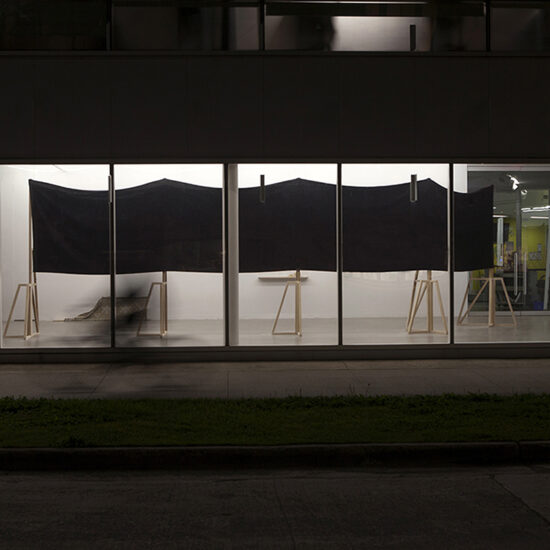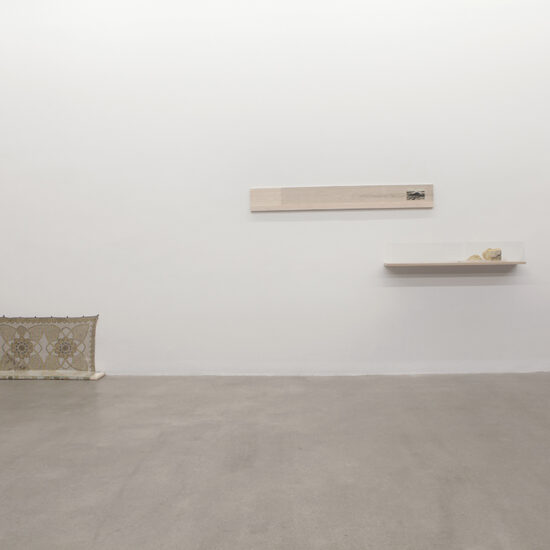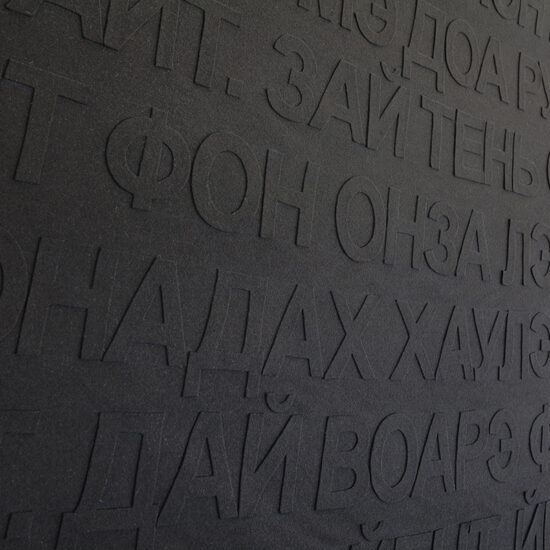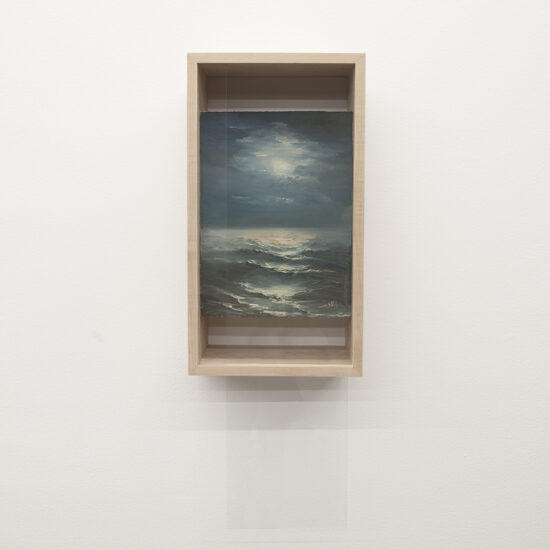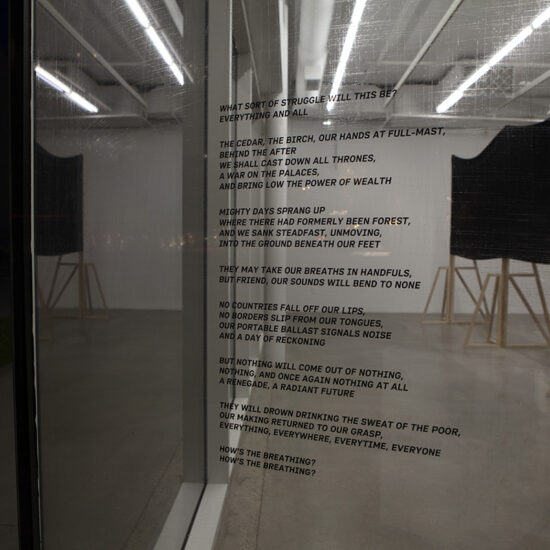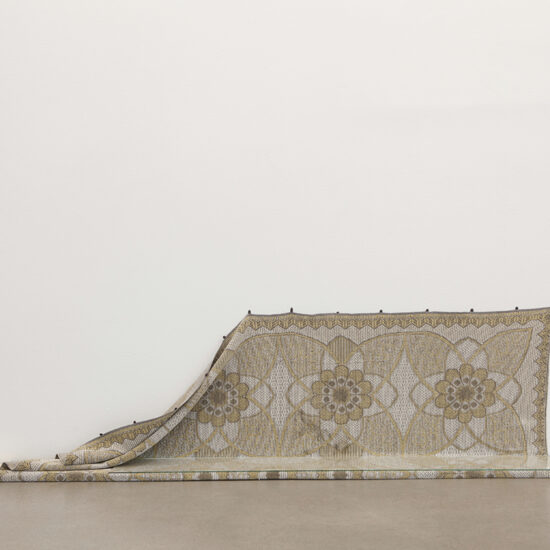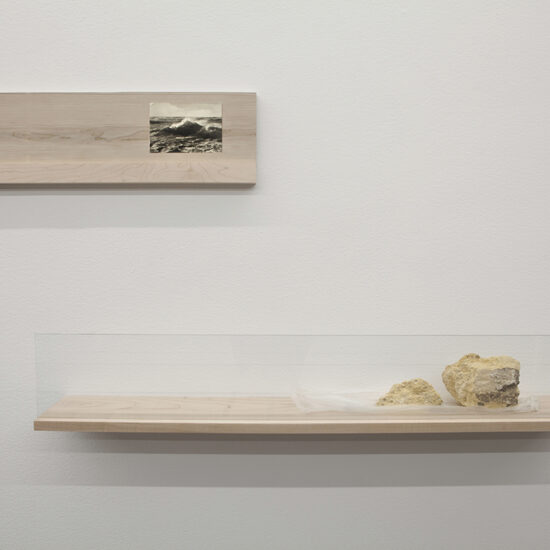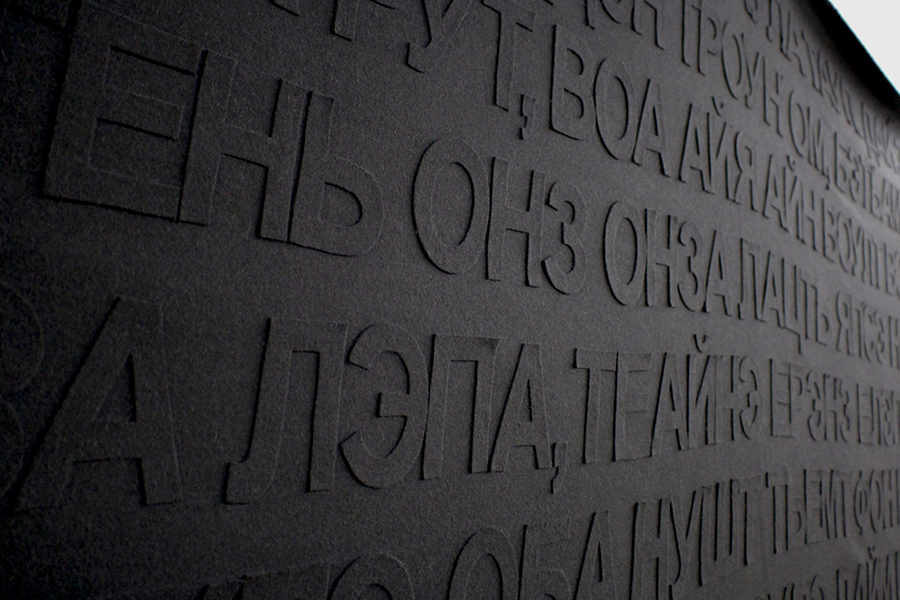
Solo Exhibition | The Cedar, The Birch, Our Hands At Full-Mast, Behind The After by Kandis Friesen
June 10 – August 22, 2020
*Reduced hours / by appointment
Plug In Institute of Contemporary Art | 1, 460 Portage Ave | Winnipeg MB | Canada
Plug In ICA is excited to announce The Cedar, The Birch, Our Hands At Full-Mast, Behind The After, a solo exhibition by Kandis Friesen.
The Cedar, The Birch, Our Hands At Full-Mast, Behind The After is a line from a poem, a circulation of diasporic object, image, and text. The central work is a monumental monochrome banner, written in the oral Russian Mennonite language and transliterated into the Cyrillic alphabet. Collaging excerpts and citations across five hundred years of tangential Mennonite histories, the banner’s text cites radical Anabaptists during the Reformation, Ukrainian anarchists during the Russian Revolution, early Constructivists, Soviet conceptualists, and Friesen’s own writing, building into a poetic call to arms. Silent in its near-illegibility, the banner’s elusive text forces its legibility to a small audience: those Russian Mennonites from the Soviet Union, who became refugees, exiles, displaced, and disappeared, a banner for an impossible gathering.
The wall-based works are a new iteration of an ongoing series, Our hands meet the sun at the edge of things, that draws on Soviet Mennonite narratives and the Diaspora as points of departure for expansive assemblage and collage. They condition the effect of a vessel, a form of travel, from one movement to the next that speaks to the production of multiple image worlds and shifting cultural forms across eras and time. This iteration is comprised of a postcard, a painting, a stone, and a blanket, triangulating three coasts and a landlocked site of exile. A postcard of a frozen wave from the DDR’s Baltic coast sits in horizon with a small painting of the moonlit Black Sea, purchased by the Friesen’s great uncle on his only trip back to his home village in Crimea. On a shelf below sit blocks of soft yellow Odessan limestone, resounding the soft yellow tones of a nearby blanket hung low against the wall, it’s folds held down by glass and wood. This factory-woven blanket from Soviet Kazakhstan accompanies the other objects, as a wallpaper, a decorative textile, a packing material for when they might need to move again. The idea of the multiplied multiple is a foundation of this series, thinking through material culture and migration through this lens: infinite configurations of display in infinitely shifting sites.
The exhibition, while it pronounces the sublime force of a protest banner, also dwells in the intimate relationship between the three objects that are from and of the sea, presented as a set. Displayed on expanded shelves and frames, their glass is present and protects, but leaves them porous and circulating, in some kind of site of holding, a vessel that conditions the site for movement, of a living archive, changed and changeable, as malleable as memory itself.
Kandis Friesen’s work is anchored in diasporic language, dispersed translations, and disintegrating archival forms. Often circulating as video, sculpture, installation, and writing, her compositions build from architectural, material, and spectral inhabitations of exile, amplifying minute and myriad histories at once. Her work has been exhibited and screened at LUX (London, UK), Hyde Park Art Center (Chicago, US), Chicago Architecture Biennial (Chicago, US), TRUCK Contemporary (Calgary, CA), Art Gallery of Hamilton (Hamilton, CA), FIFA (Montreal, CA), WNDX (Winnipeg, CA), MIX NYC (NYC, US), Athens Digital Arts Festival (Athens, GR), and Jihlava International Film Festival (Jihlava, CZ), among others. She has received grants and awards from the Canada Council for the Arts, CALQ, the Images Festival Steamwhistle Award (with Nahed Mansour, 2012), Best Canadian Work at WNDX (2018), and the Brucebo Art Foundation Travel Research Grant (2019). Her video works are distributed by Groupe Intervention Vidéo in Montreal.
All public programming is free and open to the public.
Associated Programming
Solo Exhibition | The Modernist by Catherine Opie | June 10 – August 22, 2020
Artist Talk by Catherine Opie | Thursday, July 23, 2020 | 6PM CT
Co-presentation with Centre for Research in Cultural Studies University of Winnipeg (CRiCS), MAWA, and the Winnipeg Architecture Foundation.
Acknowledgments
We are on Treaty 1 Territory. Plug In ICA is located on the territories of the Anishinaabeg, Cree, Oji-Cree, Dakota, and Dene peoples, and the homeland of the Métis Nation.
Plug In ICA extends our heartfelt gratitude to our generous donors, valued members, and dedicated volunteers. We acknowledge the sustaining support of our Director’s Circle. You all make a difference.
We gratefully acknowledge the support of the Canada Council, the Manitoba Arts Council and Winnipeg Arts Council. We could not operate without their continued financial investment and lobbying efforts.
Plug In ICA relies on community support to remain free and accessible to all, and enable us to continue to present excellent programs. Please consider becoming a member of Plug In ICA and a donor at https://plugin.org/support or by contacting Erin Josephson-Laidlaw at erin@plugin.org.
For more information on public programming and exhibitions contact Nasrin Himada at nasrin@plugin.org.
For general information, please contact: info@plugin.org or call 1.204.942.1043




